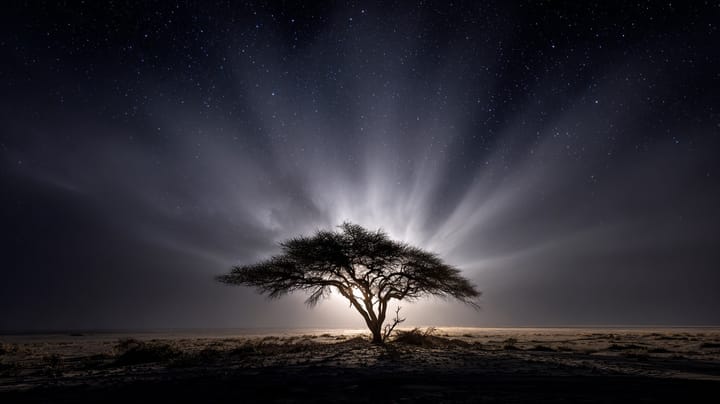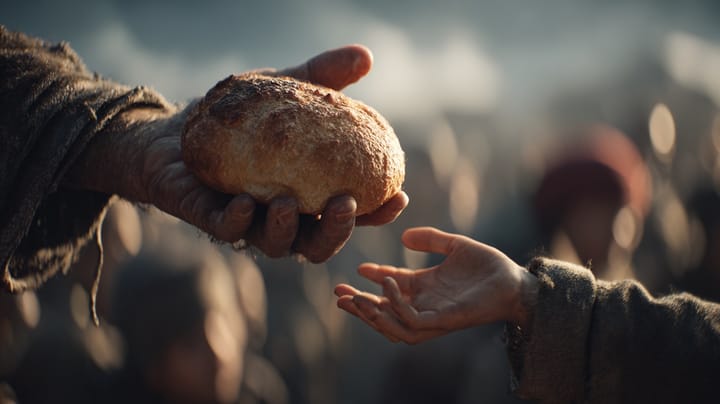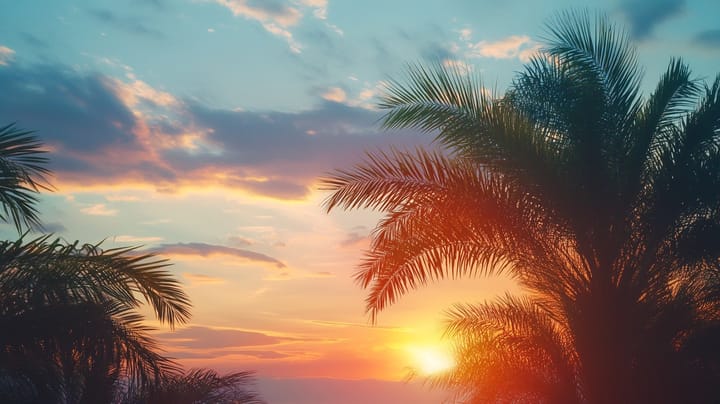Fairhaven Service 7-9-2023
Summary
Ralph E. Duckworth, the Chairman of the nonprofit organization The Nyadire Connection, discusses their 15-year mission in Zimbabwe, particularly Nigeria. Their primary objective is to enhance medical care by refurbishing clinics and providing essential amenities such as electricity and running water. They utilize solar power, an abundant resource in Zimbabwe, to overcome unreliable power supplies. Before their intervention, conditions were dire, with instances of women giving birth by candlelight. Post-refurbishment, the clinics are equipped with indoor running water and flush toilets, significantly improving the quality of life.
The Nyadire Connection operates entirely on a volunteer basis, with no overhead costs or salaries. They emphasize long-term committed relationships and work in partnership with local communities, listening to their needs and involving them in the projects. They have successfully refurbished five clinics, with a sixth one underway, and aim to complete their “Moonshot” project by the end of the year. Duckworth expresses gratitude for the support they have received and highlights the transformative impact of their work on the communities they serve.
Transcript
And good morning, Church. It’s good to be with you today. The Nigeria Connection is really a loose coalition of about six Methodist churches in the Pittsburgh area, including Christ Church over in Bethel Park, Mount Lebanon, Dutille where I attend, and some others. So we have been around for a while.
Next slide, please. And we do sponsor mission trips to Africa, so my thoughts and prayers are with you folks as you travel. I personally have been over five times, but we have some team members have been over 12, 14 times over the course of the year. Next slide, please, Robin.
So we’ve been around for more than 15 years. Next slide. As Jim mentioned, 2006, we got affiliated with the Methodist mission in Nigeria at a request from a district superintendent who was looking for support for the Nigeria hospital. So that was our initial focus.
Next slide, Robin. We did expand the number of programs after our first team of, I think, 16 people went over in 2006. We saw the need that was there. It wasn’t just the hospital, but it was the orphanage, it was the farm.
And so our mission grew as we got more involved. Next slide, please. Up over 14 programs, one of which is very near and dear to my heart, which I’ll focus on, that’s the rural medical clinics. But there’s some other fantastic programs that have sprung up just because people saw and felt the need.
We’ve had a very successful program in teaching young girls there to sew sanitary clothing so that the young girls can stay in school because without these special pieces of clothing that they use, they can’t go to school. They’re not allowed. So this has gone a long way towards giving the young women an opportunity to further their education and to stick with their education, which is very important in Zimbabwe. Houses, 150 bed hospital, the six remote clinics we’ll talk about.
In the orphanage, we have about 24 orphans actually living on campus at the mission. I’m now funded almost exclusively from individual partnerships and sponsors from folks back here. My wife and I, for example, support a young man called Lovemore, and trying to get him through his education in Nigeria and then on to college. When we get out to the rural medical clinics, it’s quite an eye opener.
The government is largely a socialist government there, and they do provide some support for hospitals and clinics, but not very much. And so when I went over in 2013 to assess the condition of these six clinics that are affiliated with the hospital at Nigeri, we found that none of them had running water, none had indoor plumbing, no indoor toilets. The toilets were outdoor outhouses. They call them Blair toilets, and they consist of, seriously, three walls and a concrete pad for a floor and a hole in that floor.
That’s it. There’s no chairs, there’s no seat. So we do joke for our mission statement, when you come back, you have pretty good aim because you learned to do that. But the clinics are the first line of defense for thousands of villagers who live in these remote areas.
And a pregnant mom might walk nine miles to get to one of these clinics because there’s no bus service, there’s no automobiles, you’re lucky if there’s even a road that gets you close. And they go to these clinics because their choice is to try and get there in time to deliver a baby in a relatively safe environment or you’re back at your village delivering your baby probably on a mat on a dirt floor. So we saw the need to improve the quality of medical care at these six clinics. The clinics, indeed, are out in the bush.
And one of the most amazing sights I ever saw during my travels was you’d show up to talk to the local people, talk to the staff, the nurses at these clinics. No doctors at the clinics. And the nurses out in the middle of the bush show up for work every day, absolutely clean, starched white uniforms. I don’t know how they do that.
Out in the middle of the bush. But they do, and they’re very proud of the work that we do. So that just enhanced our desire to make their efforts even more effective by trying to give them some of the basic necessities of decent medical care. So electricity, although it’s spotty in Zimbabwe, where we can, we install solar panels, because Zimbabwe experiences a lot of sunshine.
So solar power is one of the up and coming areas that will help Nigeria particularly be successful. Before we got there, we heard stories of women giving birth by candlelight or cell phone illumination because they had no power or unreliable power. After a clinic has been refurbished, it is outfitted with running water indoors, flush We have a new facility. We have a new facility for wash toilets which is an amazing improvement in quality of life.
Next slide, please. We are a nonprofit, 100% volunteer. We have no overhead, no salaries. It’s been able to continue on for the 15 years through the efforts of volunteers.
We’ll go through these real quick, Robin, please. So again, 100% volunteer. Long-term committed relationships. It’s not just we’re going to come over and do this for you.
The biggest reward that we get is establishing those person-to-person contacts and friendships. There we go. Person-to-person, church-to-church, school-to-school. Help people of Zimbabwe while enriching spiritual lives here in Pennsylvania.
Believe me, if you go on a trip over to Africa, you come back spiritually changed. The focus is on Nigeria and it’s what they see their needs are. We’re not the know-it-all people who go over and say, Oh, we think you need to do this, we need you. We go and listen and talk with the folks and find out what’s most important to them.
Next slide. Oh, regular feedback. Yeah, we have a newsletter. You can go onto our website, nigeri.
org, and you can get all the updates about the various programs and activities that we have going. Let’s see. These are the 14 programs. They are in various levels of activity.
Some only happen every now and then. For instance, we might have a container shipment of medical equipment going over. Well, that doesn’t happen all that often, you know, maybe every couple of years or so. Let’s move on to the next slide, Robin, please.
So, you know, Nigeria is quite a distance away. It is in the southern portion of Africa, sub-Sahara Africa. Next slide, please. Yeah, I don’t know what your experience is going to be, but we end up spending about 25, 26 hours traveling by the time we leave Pittsburgh to the time we actually arrive at the mission.
(audience member speaking off mic) Okay, okay. Yep, go to J. Joberg and then buy land after that, yep. This is a picture of one of the clinics, the before picture.
And although the insides were quite clean and the nurses would keep the facilities clean, you can see very aged, kind of run down, Probably built by the government, 1950s perhaps. Next slide please. Very cramped quarters, no separate wards for men and women. So if you were kept overnight for whatever reason, you never knew who you might be bunking next to.
Next slide please. So one of our tasks was to go out and meet with the local folks and discuss with them their needs, what they wanted from the clinics, and perhaps most importantly, form a partnership with the local folks. ‘Cause again, this is not an effort where we’re gonna do this for you. It’s a situation where we’re going to do this together.
You folks all believe that a new clinic is important to your lives and to your medical care. We agree with that. So their part of the bargain is they make by hand, what are called farm bricks. They weigh about five pounds a piece.
They’re made by hand. The local villagers make them up. They make 130,000 of these bricks in preparation for the construction of one of the new clients. The local villagers also carry, typically by hand or in a basket, the sand, aggregate, pebbles that go into construction, as well as water.
And each village in the surrounding area has a chief, and the chief will put a stake in the ground, and it is the villagers job to carry stones until it reaches the top of that stick. And every village has a similar goal. And so that is part of their bargain, then the rest of their bargain is they are to maintain those clinics after they’re completed. So part of our effort after we started the initiative of getting the clinics built is to go back and see how they’ve been doing, have they been keeping up that end of their bargain.
And I’m pleased to say that we’ve been back all of the clinics that have been finished and they are maintaining them. That was a big concern of mine. Would they really follow through with their end of the commitment? And they have. Next slide please.
So you can see moms with their babies. The clinics not only provide a safe and clean place to give birth to your child, but the The clinics also provide prenatal and postnatal nutrition counseling, infectious disease counseling. Babies come back and get their immunizations. Local people get immunizations or treatment for things like malaria.
Tuberculosis is still a big problem in Zimbabwe. Next slide please. And one of the really cool things is to see people who have small children participating in the construction of some of these clinics. Next slide, please.
This is a little shelter for the, we call them waiting mothers, waiting moms, ’cause they’re pregnant and they come maybe a few days before they’re due, if they can get there in time. That doesn’t always happen. And then they stay there and do their own cooking. And they still provide for themselves even though they’re housed there at one of the clinics.
Next slide, please. Here’s two gals gathering up some pit sand, I think, and they’ll carry that sand up to the construction site in a basket on their heads. Next slide. There you can see here’s a whole line of gals, and if you look closely, you can see in the back of a couple of the gals in the center a little head popping up.
She’s got the baby slung on her back as she’s carrying this aggregate up up into the construction site. Next slide, please. And here’s two more women. Again, one’s got the baby on her back, dumping the sand that they had hauled up.
So the people truly are vested in these clinics. Next slide, please. This is the start of a new one. So at this point, the shell of the building has been built, and then the bricks have been covered with a layer of, kind of like plaster, and then that will eventually be painted.
Next slide, please. There we go. We see a painted shelter for the moms and some moms in there. They’ll also do counseling services, nutritional training in that particular shelter.
Next slide. So after the clinic is built, we get it furnished with equipment. Brothers Brothers Foundation provides a lot of the medical equipment that gets shipped over. Nice, new, clean.
This is Bishop Niwotiwa of the Zimbabwe Episcopal Conference. He does his bishop things. He comes out for celebrations, kiss the babies, like a politician. Lot of smiling faces.
Next slide, please. So we are right in the middle of what we’re calling the Moonshot, kind of named after the 1960s program by the United States government to land a man on the moon, called the moonshot. So in 10 years, you’ll recall, they wanted to have a man on the moon by 1970. Of course, that happened in 1969.
Well, our moonshot is designed to collect the remaining funding needed for the last of the clinics. Five of the clinics are finished, operational. The sixth one, Shandenga, is under construction right now, we’re about halfway through. So we’re tasked with collecting about another $140,000 to finish off that clinic.
We have some expectations of some large, very generous donations coming forward that’ll bring that number down below $100,000. So we’re looking to get finished up here by the end of this year, which will be 10 years of working on getting the clinics refurbished. So it’s been quite a challenge. There’s been many, many a time where I have sat and looked up and said, Lord, I don’t know where this money’s coming from, but he has provided, sometimes in the most unusual ways and unexpected ways.
But he’s been there for us the whole time. Next slide, please. So here’s Chandanga, and you can see some of the major components of a clinic. Everything from the waiting mother’s home renovations to a bathroom for the moms, a solar powered water well, cooking sheds for the moms and the staff.
So yeah, it’s quite an operation. It’s several buildings, and each clinic does cost about $360,000 to build. Here in the United States, you couldn’t even perhaps get one of those buildings built for 360,000. But of course, the labor to make the bricks and the haul of the sand and water is all free.
Next slide, Robin. Thank you. So we’ve done quite a bit for 15 years, but there’s more. A lot of our programs are gonna continue on.
I don’t know what we’re gonna do in rock construction area once we finish the clinics, but there’s still many other construction needs there, and we hope to address some of those. So I’ll be sticking around after service for a little bit. for going on up to Spencer. If you have any questions, I’d be glad to chat with you afterwards.
But I wanna conclude by thanking you all for a very generous donation that you made last year towards the clinic. I think it was $4,000. And that went well towards getting a couple of windows and door frames in place at the clinic. So thank you and bless you and continue doing God’s work.
Thank you.


